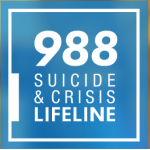Many folks believe that anyone who indiscriminately shoots masses of people must be mentally disturbed, and many are. Unpredictable episodes of this type of gun violence are understandably terrifying. But, as a result of this fear, many stigmatize all individuals with mental illness as being predisposed to using firearms to commit murder and mayhem, despite evidence to the contrary.
According to the American Psychiatric Association (APA), the overall share of violent crimes committed by people with serious mental illness is only about 3 percent. What’s more, when these rare crimes are examined in detail, mass shootings by people with serious mental illness represent less than 1 percent of all gun-related homicides each year in the United States.
The APA also stresses that although some of these shooters are found to have a history of psychiatric illness, no definitive research suggests that a majority of perpetrators are primarily influenced by serious mental illness as opposed to possible psychological turmoil from other sources.
In addition, experts agree that mental illness alone is highly unlikely to predict gun violence. Still, stigma persists, which can lead to isolation, fear and marginalization of individuals with psychiatric conditions. Among other risk factors, “alcohol and drug use increase the risk of violent crime by as much as sevenfold, even among persons with no history of mental illness,” write Jonathan M. Metzl, MD, PhD, and Kenneth T MacLeish, PhD, in “Mental Illness, Mass Shootings, and the Politics of American Firearms,” a recent report published in the American Journal of Public Health.
From January through May of this year, 101 incidents of mass shootings—defined by the nonpartisan Congressional Research Service as an event that leaves four or more individuals dead at the same place and time—took place in the United States, according to statistics compiled by the Gun Violence Archives, a nonprofit corporation based in Washington, DC, that documents these crimes.
In February 2013, months after the shootings at Sandy Hook Elementary School in Newtown, Connecticut, and at a movie theater in Aurora, Colorado, the American Psychological Association commissioned researchers to study gun violence in the United States. Their assessment culminated in a report titled “Gun Violence: Prediction, Prevention and Policy” that offered effective strategies and policies to predict and stop gun-related violence.
Some researchers recommend primary prevention programs to reduce risk factors for violence and secondary strategies to help individuals who experience emotional difficulties or conflicts before they become violent. These interventions would require a team of professionals from multiple disciplines—including mental health care, education and law enforcement.
These scientists stress that this method is key because there is no consistent psychological profile or standard set of warning signs that can be used to reliably identify those who might turn to gun violence.







Comments
Comments